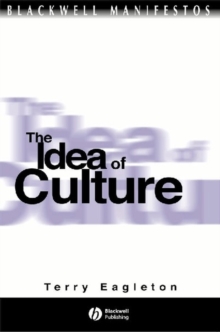
Islamicate Cosmopolitan : Myth or Movement Hardback
by Bruce Lawrence
Part of the Wiley-Blackwell Manifestos series
Hardback
Description
Islam can not be considered - past, present, or future - except from a specific place and time.
The place I occupy is the West, North America, the USA, and the time is the late 20th century now eliding into a new century, the 21st, and a new millennium, the third in a Christian frame of time. During the long 20th century the complexity and subtlety of Islam were consistently ignored in the West, just as its resilience and persistence were routinely underestimated.
It is impossible to talk about the future of Islam without revisiting several points in the near past when its future was depicted with certainty, only to have events reveal that the forecasters had the vision of bats.
To try yet again to imagine the future of Islam without revisiting prior estimates of its future would be both foolhardy and reckless.
The past may be a foreign country, as David Lowenthal quipped, yet we need to revisit it in order to discover the place of Islam in the 21st century. For THE FUTURE OF ISLAM I have elected to look at four dates that mark both the history of the West and the attempt of Western analysts - scholars and public policy pundits alike - to contain the genie of Islam in a tiny bottle.
The genie has now sprung free from that pitiful bottle, and it is time to revisit moments in the near past that help us better anticipate the near term future.
We cannot reckon what might unfold in the 21st century without noting how 'certain' were the issues and moments, the trends and predictions, that defined Islam in the past.
I begin with the end of World War II. By 1950 four vectors or profiles of Islam - the political and social, the cultural and the mystical - filled the imagination of Europeans and Americans alike when they thought about Islam and Muslims.
With few exceptions Muslims were seen as citizens of the Middle East; Other Muslims who lived outside the Middle East, whether in Africa, Asia or the West, were ignored outright, or at most given limited, fleeting attention. Islam is not monolithic. One cannot talk about either its past or its future without attention to its internal differentiation.
I have selected four vectors - the political and social, the cultural and the mystical - because each had its traits and force, its options and limits, that have persisted beyond 1950, but also became distinctively identifiable from that moment on.
The same recurrent pattern of vectors, with overlapping yet competing features, can be traced In 1975 and again in 2000, and it will recur yet again in 2025.
Information
-
Item not Available
- Format:Hardback
- Pages:224 pages
- Publisher:John Wiley and Sons Ltd
- Publication Date:28/01/2021
- Category:
- ISBN:9781405155137
Information
-
Item not Available
- Format:Hardback
- Pages:224 pages
- Publisher:John Wiley and Sons Ltd
- Publication Date:28/01/2021
- Category:
- ISBN:9781405155137










